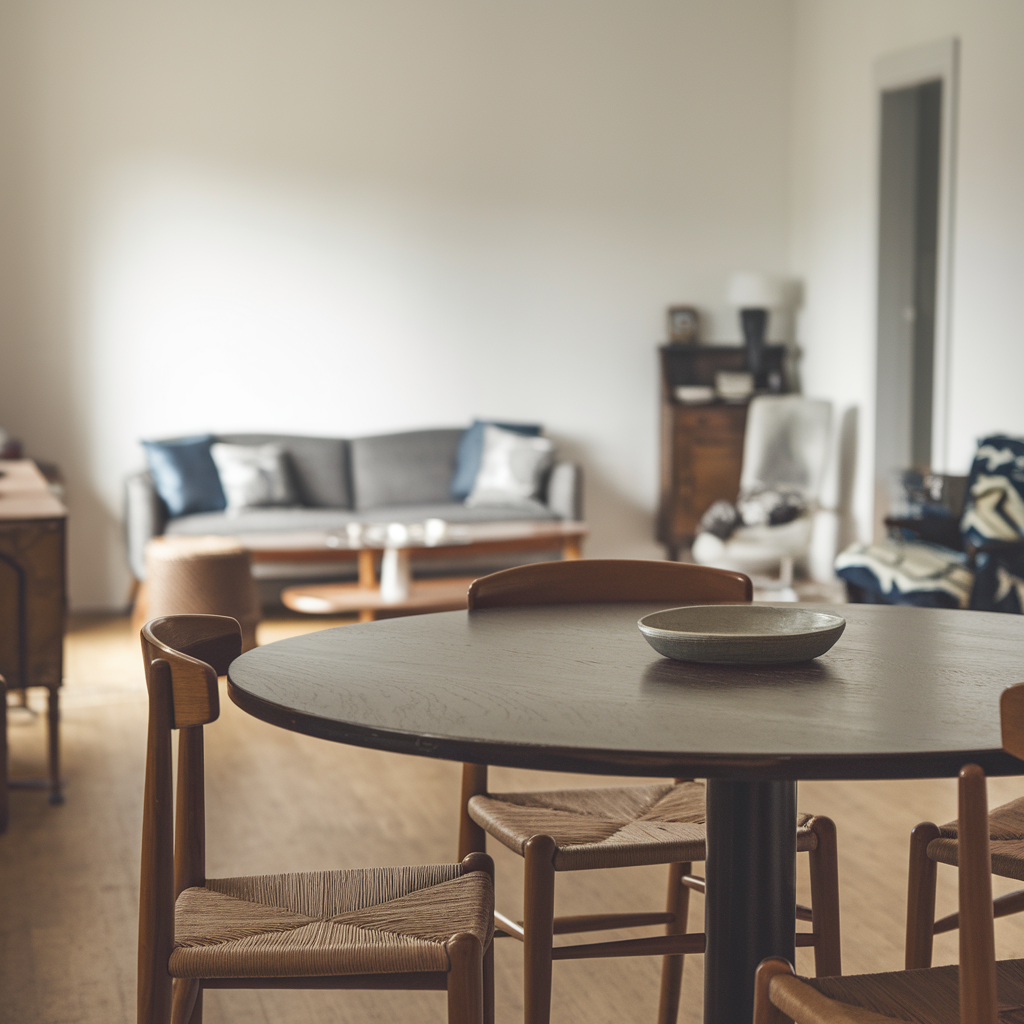Dining Table Size Guide: What Fits Your Room?
Choosing the right dining table size is essential for creating a comfortable and functional space. Whether you have a compact dining nook or a large open-concept area, the perfect table size should balance proportion, flow, and seating capacity. This comprehensive guide will help you determine what dining table size fits your room best and ensure a seamless dining experience.
Why Dining Table Size Matters
The wrong table size can make a room feel cramped or awkwardly empty. A properly sized dining table:
- Maximizes usable space
- Allows for smooth traffic flow
- Provides comfortable seating
- Enhances overall room aesthetics
Step 1: Measure Your Dining Area
Minimum Clearance
To ensure diners can move around the table comfortably, follow this rule:
- Leave at least 36 inches (91 cm) of clearance from the edge of the table to the nearest wall or furniture.
This allows space for chairs to slide out and for people to walk behind seated guests.
Example:
If your dining room is 10 feet by 12 feet (W: 120″ x D: 144″), subtract 36 inches from each side:
- Usable space for the table: W: 48″ x D: 72″
This measurement helps guide you toward appropriate table dimensions.
Step 2: Understand Table Shapes and Their Spatial Impact
Different table shapes work better in different room configurations.
Rectangular Tables
- Most common and ideal for long, narrow rooms
- Can seat 4 to 12 people depending on size
Popular Sizes (W x D x H):
- 60″ x 36″ x 30″ (seats 4-6)
- 72″ x 36″ x 30″ (seats 6-8)
- 96″ x 42″ x 30″ (seats 8-10)
Square Tables
- Best for square rooms or smaller spaces
- Promotes intimacy and conversation
Popular Sizes (W x D x H):
- 36″ x 36″ x 30″ (seats 2-4)
- 48″ x 48″ x 30″ (seats 4-6)
Round Tables
- Ideal for compact spaces and small dining areas
- Easier to move around, encourages group interaction
Popular Sizes (Diameter x H):
- 36″ x 30″ (seats 2-4)
- 48″ x 30″ (seats 4-6)
- 60″ x 30″ (seats 6-8)
Oval Tables
- Softer shape than rectangular but still fits longer rooms
- Great for transitional spaces or narrow dining rooms
Common Sizes (W x D x H):
- 72″ x 42″ x 30″ (seats 6-8)
- 84″ x 44″ x 30″ (seats 8-10)
Step 3: Determine Seating Capacity
A good rule of thumb is to allow 24 inches (61 cm) per person for comfortable seating.
Seating Guidelines:
- 4 people: 36″ round or square
- 6 people: 60″ rectangular or 48″ round
- 8 people: 72″ rectangular or 60″ round
- 10 people: 96″ rectangular or 72″ oval
Also consider table leg placement—pedestal bases offer more legroom than corner legs.
Step 4: Account for Expandable Options
If you entertain occasionally, consider an extendable dining table. These tables can adapt to your needs:
- Butterfly leaf tables expand from the center.
- Drop-leaf tables save space for small apartments.
- Insert leaves are stored separately and added when needed.
Explore our Dining Table Buying Tips for detailed insights.
Step 5: Match Table Size to Room Functionality
Dining rooms often serve multiple purposes. Ensure your table complements the room’s role:
Dedicated Dining Room
- Go larger to make a statement.
- Choose a matching solid wood dining table for elegance and durability.
Kitchen or Breakfast Nook
- Opt for smaller or round tables that enhance intimacy.
Open-Concept Space
- Use a rectangular or oval table to define zones.
- Complement with dining chairs that echo surrounding decor.
Bonus Tip: Use Rugs to Anchor the Table
A rug under the table can define the dining area and enhance visual harmony. Ensure it extends at least 24 inches (61 cm) beyond the table on all sides so chairs remain on the rug when pulled out.
Final Thoughts
Finding the right dining table size is about more than numbers—it’s about creating a room that feels comfortable, spacious, and inviting. By considering room dimensions, table shape, seating needs, and usage habits, you can select a table that fits your lifestyle and enhances your home.
Browse a curated range of sizes and styles in mazonvintage.com for expert insights and room inspiration.

